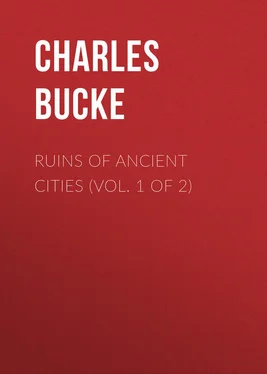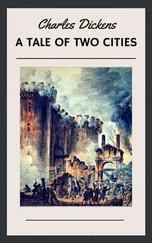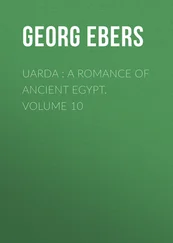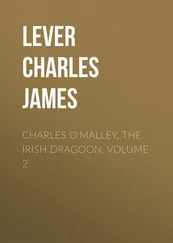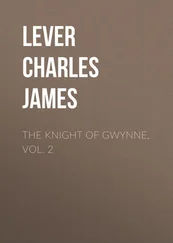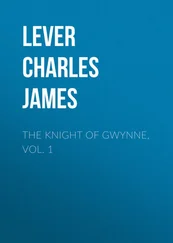Charles Bucke - Ruins of Ancient Cities (Vol. 1 of 2)
Здесь есть возможность читать онлайн «Charles Bucke - Ruins of Ancient Cities (Vol. 1 of 2)» — ознакомительный отрывок электронной книги совершенно бесплатно, а после прочтения отрывка купить полную версию. В некоторых случаях можно слушать аудио, скачать через торрент в формате fb2 и присутствует краткое содержание. Жанр: foreign_antique, foreign_prose, на английском языке. Описание произведения, (предисловие) а так же отзывы посетителей доступны на портале библиотеки ЛибКат.
- Название:Ruins of Ancient Cities (Vol. 1 of 2)
- Автор:
- Жанр:
- Год:неизвестен
- ISBN:нет данных
- Рейтинг книги:4 / 5. Голосов: 1
-
Избранное:Добавить в избранное
- Отзывы:
-
Ваша оценка:
- 80
- 1
- 2
- 3
- 4
- 5
Ruins of Ancient Cities (Vol. 1 of 2): краткое содержание, описание и аннотация
Предлагаем к чтению аннотацию, описание, краткое содержание или предисловие (зависит от того, что написал сам автор книги «Ruins of Ancient Cities (Vol. 1 of 2)»). Если вы не нашли необходимую информацию о книге — напишите в комментариях, мы постараемся отыскать её.
Ruins of Ancient Cities (Vol. 1 of 2) — читать онлайн ознакомительный отрывок
Ниже представлен текст книги, разбитый по страницам. Система сохранения места последней прочитанной страницы, позволяет с удобством читать онлайн бесплатно книгу «Ruins of Ancient Cities (Vol. 1 of 2)», без необходимости каждый раз заново искать на чём Вы остановились. Поставьте закладку, и сможете в любой момент перейти на страницу, на которой закончили чтение.
Интервал:
Закладка:
Freinshemius, in his supplement to Livy, relates, after Leo the African 15 15 This author lived in the fifteenth century.
, that the tomb of Alexander the Great was still to be seen in his time, and that it was reverenced by the Mohammedans, as the monument, not only of an illustrious king, but of a great prophet. 16 16 Earl of Sandwich.
The ancient city, together with its suburbs, was about seven leagues in length; and Diodorus informs us that the number of its inhabitants amounted to above 300,000, consisting only of the citizens and freemen; but that, reckoning the slaves and foreigners, they were allowed, at a moderate computation, to be upwards of a million. These vast numbers of people were enticed to settle here by the convenient situation of the place for commerce; since, besides the advantage of a communication to the eastern countries by the canal cut out of the Nile into the Red Sea, it had two very spacious and commodious ports, capable of containing the shipping of all the then trading nations in the world.
The harbour, called Portus Eunostus, lay in the centre of the city; thus rendering the ships secure, not only by nature but by art. The figure of this harbour was a circle, the entrance being nearly closed up by two artificial moles, which left a passage for two ships only to pass abreast. At the western extremity of one of these moles stood the celebrated tower called Pharos. The ruins of it are buried in the sea, at the bottom of which, in a calm day, one may easily distinguish large columns and several vast pieces of marble, which give sufficient proofs of the magnificence of the building in which they were anciently employed.
This light-house was erected by Ptolemy Philadelphus. Its architect was Sostratus of Cnidos; its cost was 180,000 l. sterling, and it was reckoned one of the seven wonders of the world 17 17 Some have commended Ptolemy for permitting the architect to put his name in the inscription which was fixed on the tower, instead of his own. It was very short and plain, according to the manner of the ancients. Sostratus Cnidius Dexiphanis F. Diis Servatoribus pro navigantibus , i. e. , "Sostratus the Cnidian, son of Dexiphanes, to the protecting deities, for the use of sea-faring people." But certainly Ptolemy must have very much undervalued that kind of immortality which princes are generally very fond of, to suffer that his name should not be so much as mentioned in the inscription of an edifice so capable of immortalising him. What we read in Lucian, concerning this matter, deprives Ptolemy of a modesty, which indeed would be very ill-placed here. This author informs us that Sostratus, seeing the king determined to engross the whole glory of that noble structure to himself, caused the inscription with his own name to be carved in the marble, which he afterwards covered with lime, and thereon put the king's name. The lime soon mouldered away: and by that means, instead of procuring the king the honour with which he had flattered himself, served only to discover to future ages his unjust and ridiculous vanity. – Rollin.
. It was a large square structure built of white marble, on the top of which a fire was constantly kept burning, in order to guide ships by night. Pharos was originally an island at the distance nearly of a mile from the continent, but was afterwards joined to it by a causeway like that of Tyre.
This Pharos was destroyed, and, in its stead, a square castle was built without taste or ornament, and incapable of sustaining the fire of a single vessel of the line: at present, in a space of two leagues, walled round, nothing is to be seen but marble columns lying in the dust, and sawed in pieces; for the Turks make mill-stones of them; together with the remains of pilasters, capitals, obelisks, and mountains of ruins heaped on each other.
Alexandria had one peculiar advantage over all others: – Dinocrates, considering the great scarcity of good water in this country, dug very spacious vaults, which, having communication with all parts of the city, furnished its inhabitants with one of the chief necessaries of life. These vaults were divided into capacious reservoirs, or cisterns, which were filled, at the time of the inundation of the Nile, by a canal cut out of the Canopic branch, entirely for that purpose. The water was, in that manner, preserved for the remainder of the year; and being refined by the long settlement, was not only the clearest, but the wholesomest of any in Egypt. This grand work is still remaining; whence the present city, though built out of the ruins of the ancient one, still enjoys the benefactions of Alexander, its founder.
A street 18 18 Savary.
, two thousand feet wide, began at the Marine gate, and ended at the gate of Canopus, adorned with magnificent houses, temples, and public edifices. Through this extent of prospect the eye was never satiated with admiring the marble, the porphyry, and the obelisks which were destined hereafter to adorn Rome and Constantinople. This street was indeed the finest the world ever saw.
Besides all the private buildings constructed with porphyry and marble, there was an admirable temple to Serapis, and another to Neptune; also a theatre, an amphitheatre, gymnasium, and circus. The materials had all the perfection which the experience of one thousand years could afford; and the wealth and exertions, not only of Egypt but of Asia. The place was extensive and magnificent; and a succession of wise and good princes rendered it, by means of Egyptian materials and Grecian taste, one of the richest and most perfect cities the world has ever beheld.
The palace occupied one quarter of the city; but within its precincts were a museum, extensive groves, and a temple containing the sepulchre of Alexander.
This city was also famous for a temple erected to the God Serapis, in which was a statue which the natives of Sinope (in Pontus) had bartered, in a season of famine, for a supply of corn. The temple was called the Serapion; and Ammianus Marcellinus assures us 19 19 Lib. xxii. c. 16.
, that it surpassed all the temples then in the world for beauty and magnificence, with the sole exception of the Capitol at Rome.
Ptolemy Soter made this city the metropolitan seat of arts and sciences. He founded the museum, the most ancient and most sumptuous temple ever erected by any monarch, in honour of learning; he filled it with men of abilities, and made it an asylum for philosophers of all descriptions, whose doctrines were misunderstood, and whose persons were persecuted; in whose unfeigned tribute of grateful praise he has found a surer road to everlasting renown, than his haughty nameless predecessors, who pretended to immortality, and braved both heaven and corroding time by the solid structure of their pyramids.
He founded also a library, which was considerably augmented by Ptolemy Philadelphus, and by the magnificence of his successors, was at length increased to 700,000 volumes.
In Cæsar's time, part of this library, – that portion which was situated in the quarter of the city called the Bruchion, – was consumed by fire; a conflagration which caused the loss of not fewer than 400,000 volumes.
This library, a short time after, received the increase of 200,000 volumes from Pergamus; Antony having given that library to Cleopatra. It was afterwards ransacked several times; but it was still a numerous and very celebrated library at the time in which it was destroyed by the Saracens, viz. A. D. 642; a history of which we shall soon have to relate.
The manner in which this library was originally collected, may be judged of, in no small degree, by the following relation: – All the Greek and other books that were brought into Egypt were seized and sent to the Museum, where they were transcribed by persons employed for that purpose; the copies were then delivered to the proprietors, and the originals were deposited in the library. Ptolemy Evergetes, for instance, borrowed the works of Sophocles, Euripides, and Æschylus, of the Athenians, and only returned them the copies, which he had caused to be transcribed in as beautiful a manner as possible; and he likewise presented them with fifteen talents, equal to fifteen thousand crowns, for the originals, which he kept.
Читать дальшеИнтервал:
Закладка:
Похожие книги на «Ruins of Ancient Cities (Vol. 1 of 2)»
Представляем Вашему вниманию похожие книги на «Ruins of Ancient Cities (Vol. 1 of 2)» списком для выбора. Мы отобрали схожую по названию и смыслу литературу в надежде предоставить читателям больше вариантов отыскать новые, интересные, ещё непрочитанные произведения.
Обсуждение, отзывы о книге «Ruins of Ancient Cities (Vol. 1 of 2)» и просто собственные мнения читателей. Оставьте ваши комментарии, напишите, что Вы думаете о произведении, его смысле или главных героях. Укажите что конкретно понравилось, а что нет, и почему Вы так считаете.
